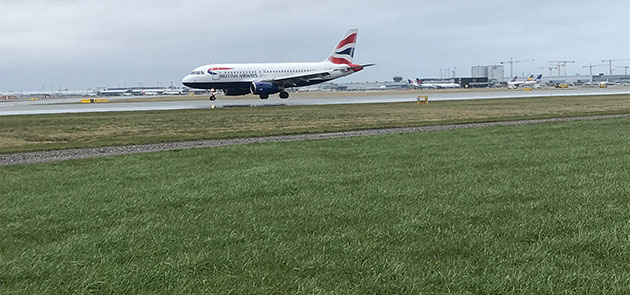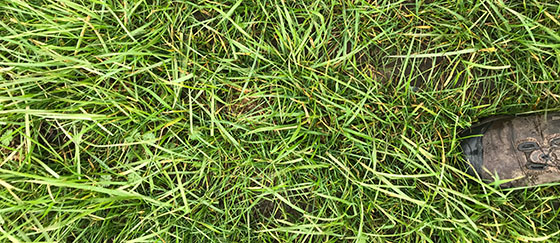DLF grass safeguards 30 million air travelers out of Copenhagen every year!
Worried about airport security? See how grasses take care of you…
Fortunately, most of us need not consider exactly how many measures are put in place to secure our air traffic. Even if we did, most measures are so subtle, that their presence is virtually unnoticeable. The most beautiful ones are part of nature and take advantage of a long-lasting relationship between plants and fungi.
These fungi are called endophytes because they live inside plants (endo = inside) and in this particular case, we are talking about grasses. They have coexisted for thousands of years ensuring each other’s survival. While the grass feeds the endophyte with carbohydrates, and in return the endophyte produces chemicals that protect the grass against insect attacks. That sounds good, but how does that relate to flight security?

Birdstrikes challenge airport security
CPH airport operates more than 260,000 takeoffs and landings every year and the number of incidents have so far been negligible. However low the number of incidents are, there is a track record of more than 70 annual bird-strikes, which can potentially produce terrible accidents. A birdstrike is a well-known phenomenon at all airfields and the usual way to combat the problem is to scare away birds using firearms and advanced radar warning systems. But the systems are not bulletproof, so to say, and sometimes bird flocks ignore the man made security measures and settle on an airfield in search for food. The food supply is plentiful in the hundreds of acres of grass paddocks around the runways. Insects and mice thrive on the undisturbed grasses, attracting lots of hungry birds.

Endophyte-grass keeps birds away from the airport
Copenhagen Airport decided to increase their efforts and to replace their entire grass sward with a grass mixture that has been specifically designed for this purpose. The grass mixture holds a very high content of endophytes, which ensures an exceptionally high insect resistance. This means that the birds will seek other hunting ground, where food is abundant. The mixture also includes grass species, which produces stiff stems. Once cut, these stems stand as spikes, giving birds a hard landing, should they decide to trespass.
Copenhagen Aiport isn't the only airport taking advantage of the endophyte-grasses. The system is also being tested in other European airfields and in military bases. So, take a look out of the window next time you fly in. Your safety is in nature's hands..
Would you like to know more about endophyte grass? Contact us to here
FAQ:
Endophytes are a good example of cooperation in nature paying off. Endophytes are common in wild grasses, and DLF's plant breeders have worked with endophytes in grasses for many years. The ability of endophytes to protect grass from insect infestation is in demand. This applies, for example, in New Zealand, where insects are a major problem in grasslands and where the endophyte grasses ensure that the grass benefits the livestock and is not destroyed by insect larvae.
